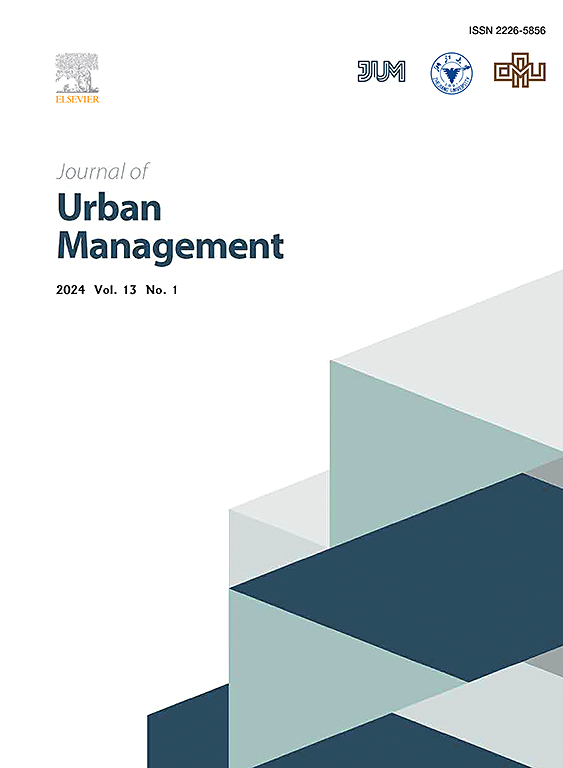How does the spatial accessibility of medical resources change during a public health crisis? A perspective based on residents' healthcare preferences
IF 5
2区 社会学
Q1 URBAN STUDIES
引用次数: 0
Abstract
The spatial accessibility of medical resources as a foundation for urban responses to public health crises, directly affects public health and social equity, and has become a key consideration in the post-pandemic era. Previous research has focused more on the spatial attributes of medical resources, neglecting residents' medical preferences, while residents' choices directly affect the allocation of medical resources. Therefore, it is necessary to explore the spatial accessibility of medical resources based on residents' preferences during public health crises. This manuscript uses discrete choice experiment (DCE) to determine the changes in medical preferences of residents in Wuhan, China during the pandemic. On this basis, an improved two-step floating catchment area method (2SFCA) is employed for assessing the spatial accessibility of medical resources. The results show that: (1) Changes in residents' medical preferences guide the spatial allocation of urban medical resources. (2) After the outbreak of a public health crisis, the importance of hospital level, travel time, and medical expenses for residents decreased, while the importance of queuing time increased. (3) The observed change of residents' preference for medical treatment activated idle medical resources and improved their spatial accessibility overall. However, differences in the initial endowment of medical resources resulted in larger regional differences in spatial accessibility and intensified the inequality of medical services. This manuscript argues that considering residents' preferences can provide a more accurate understanding of changes in the spatial accessibility of medical resources, offering important insights for optimizing resource allocation and effectively responding to future unexpected crises.
在公共卫生危机中,医疗资源的空间可达性如何变化?基于居民医疗保健偏好的视角
医疗资源的空间可达性是城市应对公共卫生危机的基础,直接影响公共卫生和社会公平,已成为大流行后时代的关键考虑因素。以往的研究更多地关注医疗资源的空间属性,忽略了居民的医疗偏好,而居民的选择直接影响医疗资源的配置。因此,有必要探讨公共卫生危机下基于居民偏好的医疗资源空间可达性。本文采用离散选择实验(DCE)来确定大流行期间中国武汉居民医疗偏好的变化。在此基础上,采用改进的两步浮动集水区法(2SFCA)对医疗资源的空间可达性进行评价。结果表明:(1)居民医疗偏好的变化对城市医疗资源的空间配置具有引导作用。(2)公共卫生危机爆发后,居民对医院级别、出行时间和医疗费用的重要性下降,而排队时间的重要性上升。(3)居民医疗偏好的变化激活了闲置的医疗资源,整体上提高了医疗资源的空间可达性。但由于医疗资源初始禀赋的差异,导致空间可达性的区域差异较大,加剧了医疗服务的不平等。本文认为,考虑居民偏好可以更准确地了解医疗资源的空间可达性变化,为优化资源配置和有效应对未来突发危机提供重要见解。
本文章由计算机程序翻译,如有差异,请以英文原文为准。
求助全文
约1分钟内获得全文
求助全文
来源期刊

Journal of Urban Management
URBAN STUDIES-
CiteScore
9.50
自引率
4.90%
发文量
45
审稿时长
65 days
期刊介绍:
Journal of Urban Management (JUM) is the Official Journal of Zhejiang University and the Chinese Association of Urban Management, an international, peer-reviewed open access journal covering planning, administering, regulating, and governing urban complexity.
JUM has its two-fold aims set to integrate the studies across fields in urban planning and management, as well as to provide a more holistic perspective on problem solving.
1) Explore innovative management skills for taming thorny problems that arise with global urbanization
2) Provide a platform to deal with urban affairs whose solutions must be looked at from an interdisciplinary perspective.
 求助内容:
求助内容: 应助结果提醒方式:
应助结果提醒方式:


